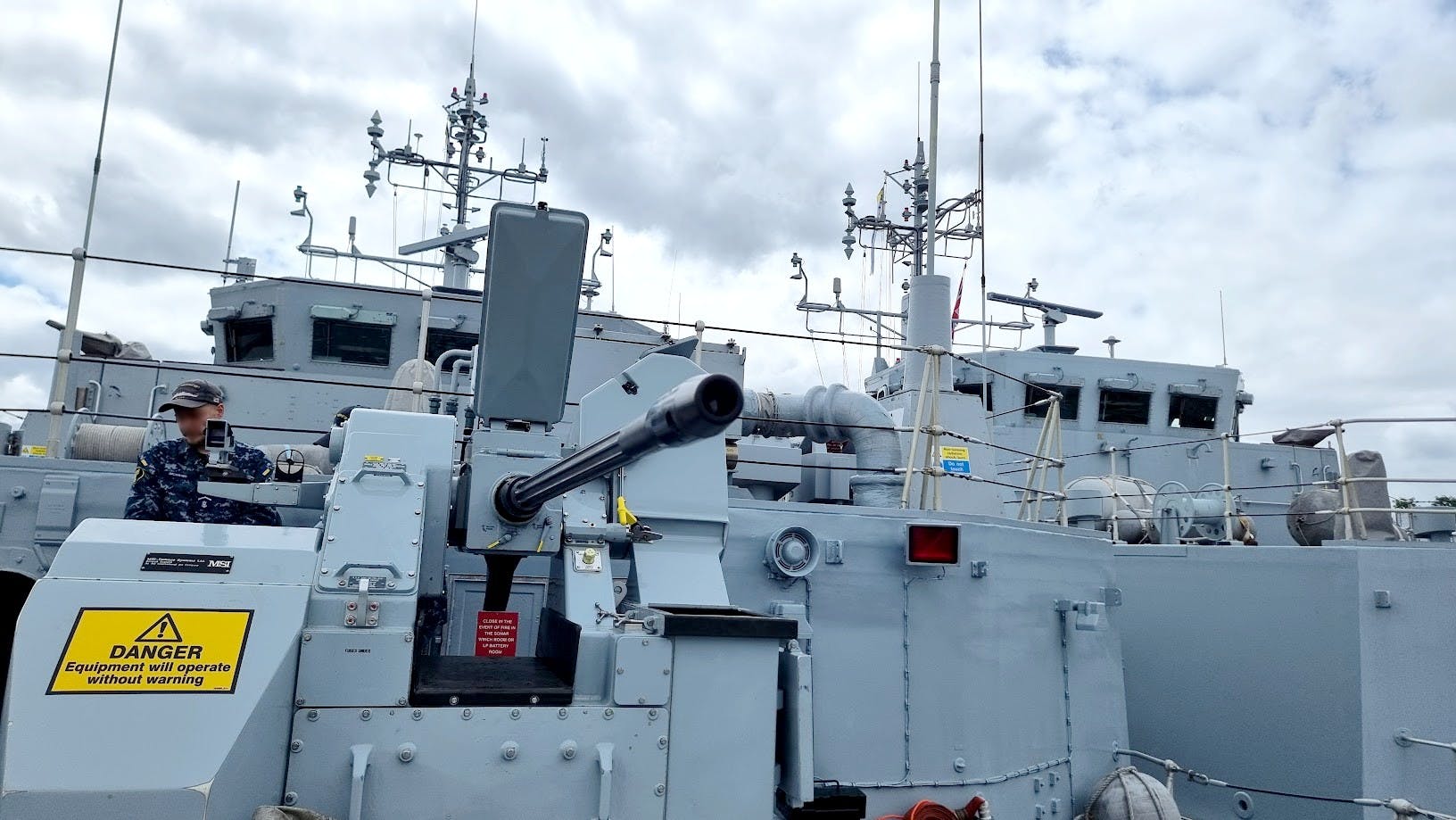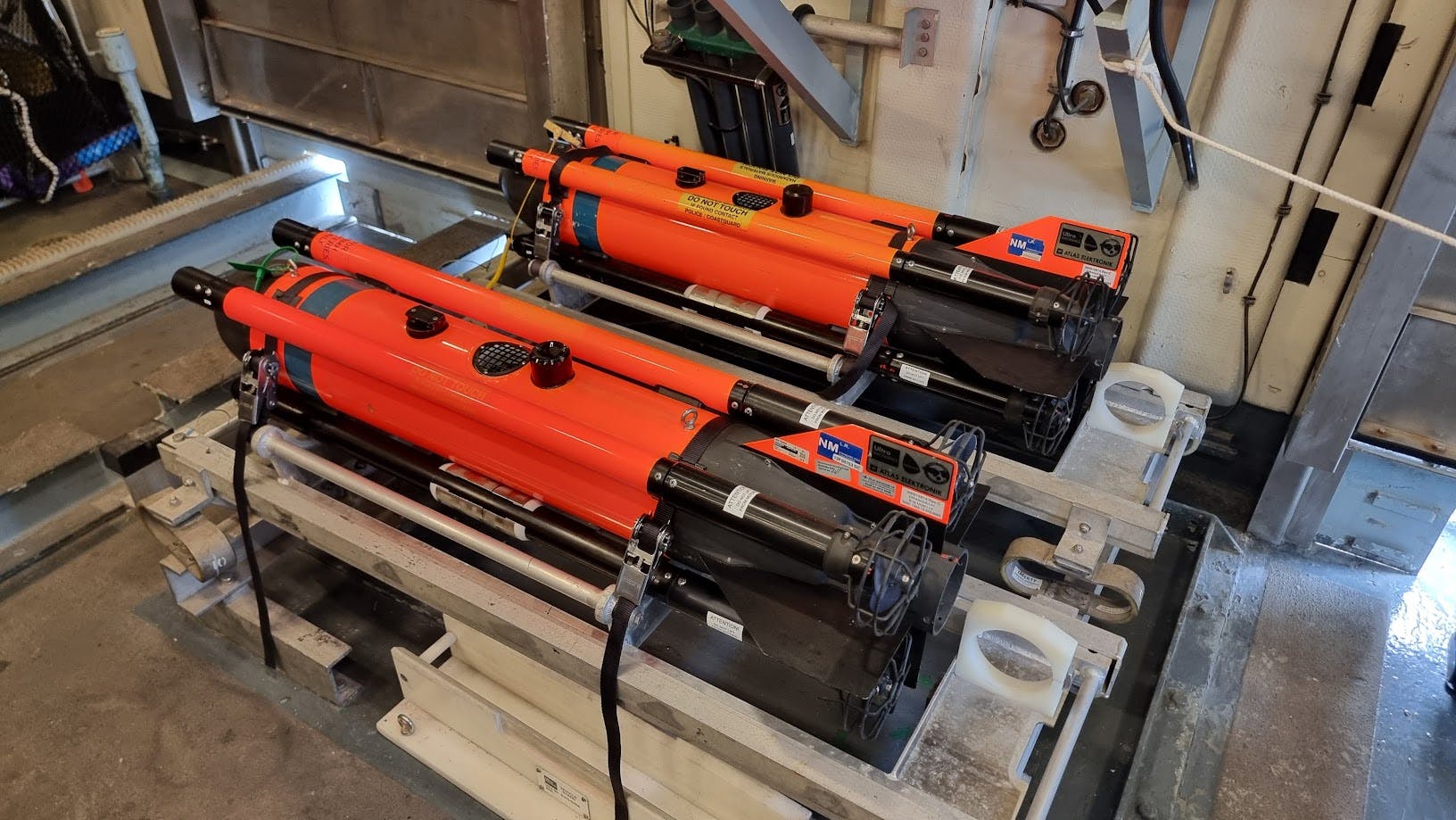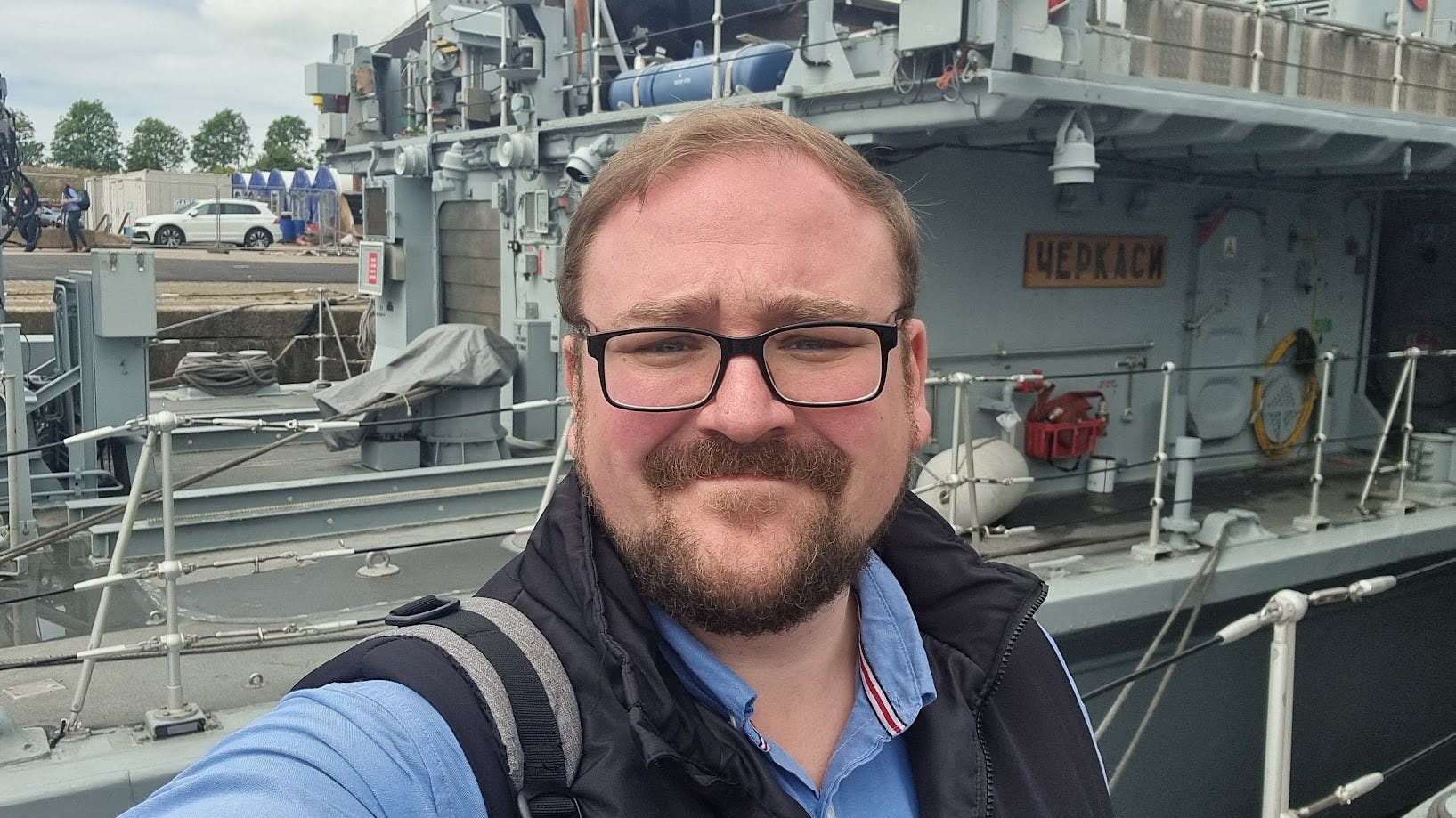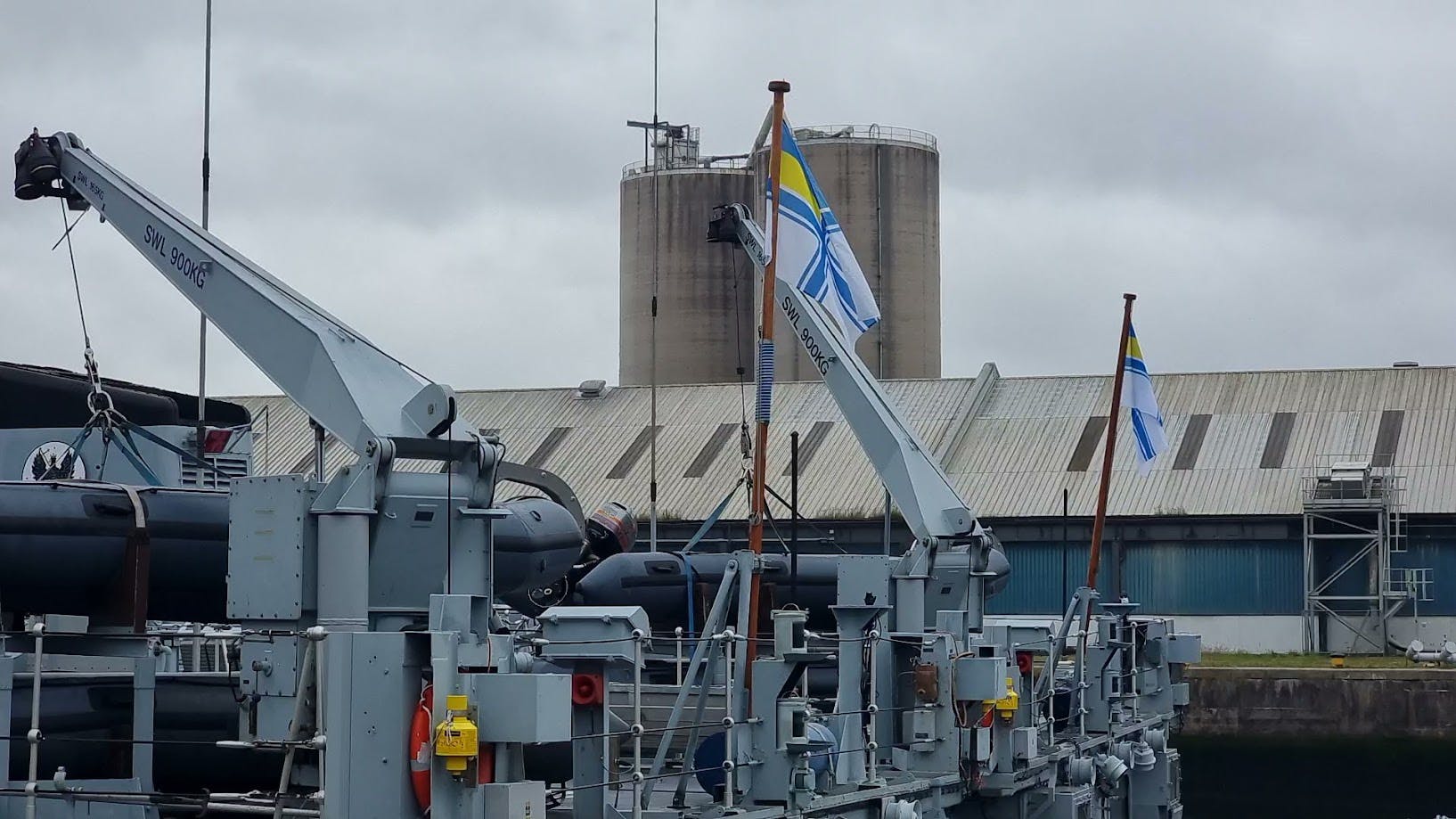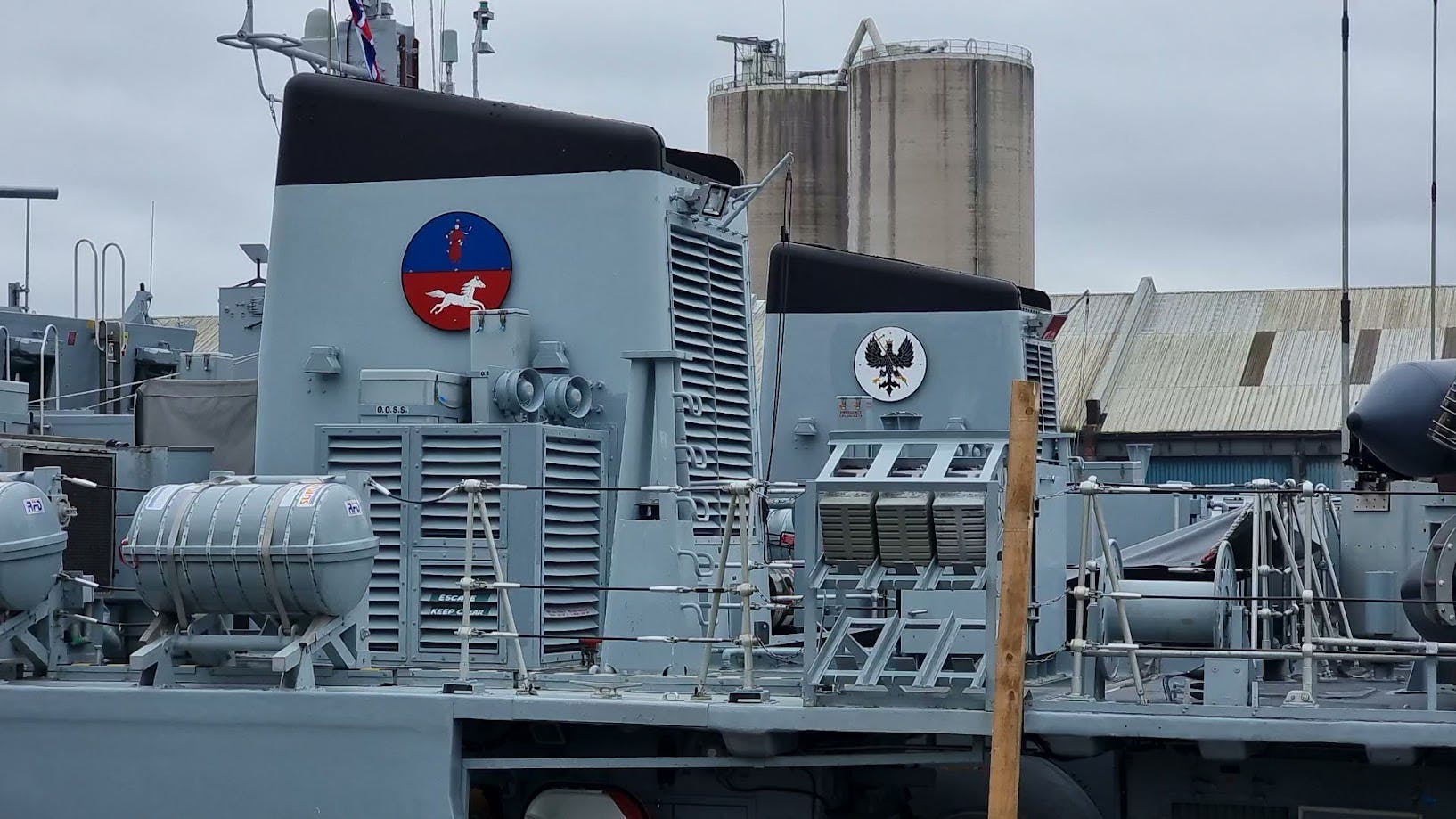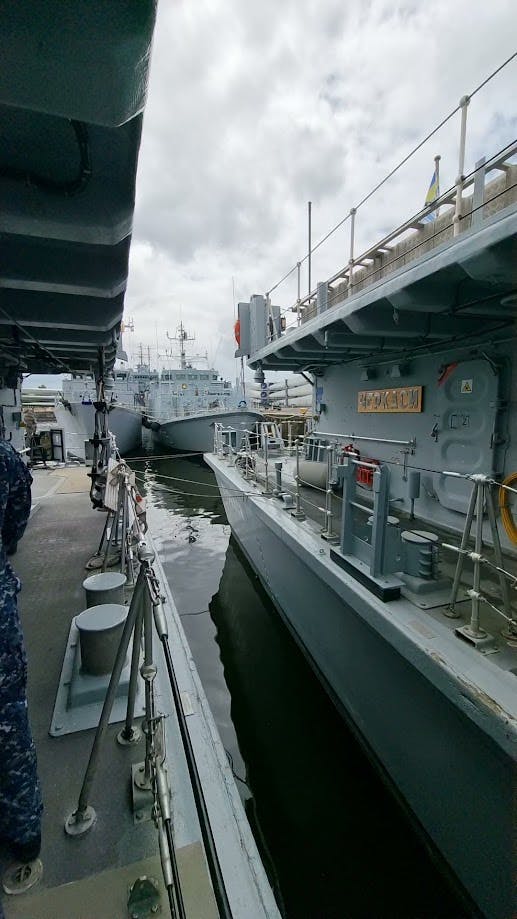In Glasgow’s King George V Dock, the Ukrainian warship Chernihiv, formerly HMS Grimsby of the Royal Navy, was buzzing with anticipation as it prepared for Exercise Sea Breeze.
The bottom line for the annual NATO exercise is “international maritime cooperation”, and my media visit aboard Chernihiv offered a unique glimpse into the lives of its young but eager crew and how they’re rising to the challenge of working with new friends in a new location.
Stepping aboard Chernihiv, I was immediately struck by the warmth and optimism of the crew. Despite the ship not leaving the wall for some time yet, there was an undeniable sense of excitement and readiness in the air.
The Ukrainian sailors, who have been training with the Royal Navy for the past 18 months, showed a high level of camaraderie, joking with us and each other.
During my tour, I was guided by a sailor who shared insights into their daily routines and various sections of the ship. He spoke about the size of their crew, around 39, and the close-knit nature of their team. The individual sleeping quarters are a significant morale booster compared to the cramped conditions on submarines, he joked.
I asked about any plans they have to upgrade the ships combat systems, but of course, he couldn’t tell me. Quite right, really.
The ship’s command centre, where the crucial decisions are made, was particularly impressive for how well the crew interacted with each other in a professional but friendly capacity. Here, the navigation team ensures Chernihiv remains on course, blending traditional methods with modern technology. “We are constantly upgrading our navigational systems to keep them modern and efficient,” he mentioned.
Chernihiv is equipped with the SeaFox mine disposal system, a state-of-the-art tool essential for minehunting missions. This remotely operated system allows the crew to neutralise mines without direct contact, significantly enhancing safety.
Additionally, diver-placed explosive charges and a 30mm DS30M Mk2 gun add to the ship’s formidable capabilities.
The sailor demonstrated the SeaFox system, explaining how it identifies and disposes of underwater mines. “This technology is crucial for ensuring safe maritime routes,” he noted, really underlining the importance of their planned, future efforts to de-mine the Black Sea.
When I asked about the crew’s anticipation for Exercise Sea Breeze, the sailor responded with enthusiasm. “Yeah, just to—it’s always an opportunity to try what you learn on the paper and train ashore to actually make it work in real life,” he said.
This eagerness to put their training into practice and operate alongside NATO counterparts was palpable.
The sailor also emphasised their careful approach to using the ship’s equipment. He pointed out that while they would utilise their capabilities in a wider range of weather conditions and sea states during wartime, during peacetime, they focused on preserving the ship and ensuring the sailors’ safety and as such, don’t plan to push the ship itself beyond its limits. The crew is dedicated to maintaining Chernihiv in top condition.
One aspect that truly struck me was the unwavering optimism of the crew. Conversations often revolved around their future plans for Chernihiv, not with an “if” Russia would be defeated, but with a resolute “when”, referring to “post-war” operations to clear the Black Sea of mines to open up the Black Sea and Ukrainian ports to their full potential once more. This confidence in Ukraine’s victory was a sentiment shared by everyone I spoke to at the event, reflecting a deep-seated belief in their nation’s resilience and eventual triumph.
Exercise Sea Breeze 2024, running from June 26 to July 5 in the Firth of Clyde and Loch Ewe, is the first of three serials this year. This joint mine countermeasure exercise between the U.S. Navy, Royal Navy, Ukrainian Navy and NATO allies aims to improve interoperability and prepare for a post-conflict Black Sea region.
“Sea Breeze 2024 provides an opportunity for Allies and partners to improve interoperability and train for a post-conflict era Black Sea region,” said Commodore Capt. Geoffrey Townsend, Commander of Task Force 68.
“It is crucial for Allies and partners to have a venue to work side-by-side on mine countermeasures, especially with the great threat floating mines pose to maritime safety and security in the Black Sea as a result of the war in Ukraine.”
The exercise aims to address the challenges that mines pose to maritime safety and security, global food security, and commerce. Royal Navy Commodore Steven Banfield MBE, Co-Chair of the Maritime Capability Development Coalition for Ukraine, stressed that these exercises help ensure the free flow of maritime trade, supporting Ukraine’s economy and enhancing regional security.
“Our ability to train and rehearse whilst growing the capability of the Ukrainian Navy will support the globally shared long-term goal of creating a safe and prosperous maritime environment in the Black Sea.”
Sea Breeze 2024-1 focuses on the integration and command and control of Mine Countermeasure Vessels and a Ukrainian task group HQ augmented by international staff officers and mentors. Commodore Dmytro Kovalenko, Chief of Training Command of Ukrainian Navy Command, stated, “The Black Sea is a major hub for imports and exports, and training for a post-conflict era Black Sea is key to preserving security and stability.”
Countries and organisations scheduled to participate, observe, or mentor during Sea Breeze 2024-1 include Bulgaria, Estonia, France, Georgia, Germany, Greece, Japan, NATO Maritime Command (MARCOM), Poland, Romania, Sweden, Türkiye, Ukraine, the UK, and the US.
During my time aboard Chernihiv, I was struck not only by how quickly the Ukrainian crew had grown to master the technological sophistication of the ship but also by the palpable sense of unity and purpose among the crew.
The success of the Ukrainian Navy in integrating ships like Chernihiv into their fleet would not be possible without the extensive support from international partners. The training and resources provided by the Royal Navy and other NATO allies demonstrate the importance of working with allied forces, people sharing the same goals are keen to help each other out
This support is a strategic necessity and a moral commitment to upholding international maritime law and security.
As my visit aboard Chernihiv concluded, I was struck by the crew’s unwavering dedication and resilience. Their journey, from training with the Royal Navy to participating in NATO exercises, exemplifies the spirit of international cooperation and the pursuit of peace and security.
The optimism and professionalism of the Ukrainian sailors aboard Chernihiv serve as a powerful reminder of the strength found in unity and shared purpose.
Amidst the bustle, I also spoke with Rear Admiral Thomas Wall of the US Navy. We discussed the Ukrainian crews’ eagerness to commence demining the Black Sea and how their training with NATO has been instrumental.
Rear Admiral Wall highlighted the excitement among the Ukrainian sailors as they approached this significant two-week exercise. “This is kind of a culmination of the training. They’ve been training now, almost two years. So this is the kind of final test or the final exam of the mission,” he explained.
The crews are not just eager to demonstrate their capabilities but also to work alongside other nations with a shared mission. Wall mentioned, “The commanding officer looked out behind him and said he was happy to be working with all these other nations that have the same mission.”
Exercise Sea Breeze is a training event, but it is also a symbol of solidarity. The crew of Chernihiv, with their indomitable spirit and readiness, are a wonderful symbol of the enduring partnership between Ukraine and its NATO allies.

